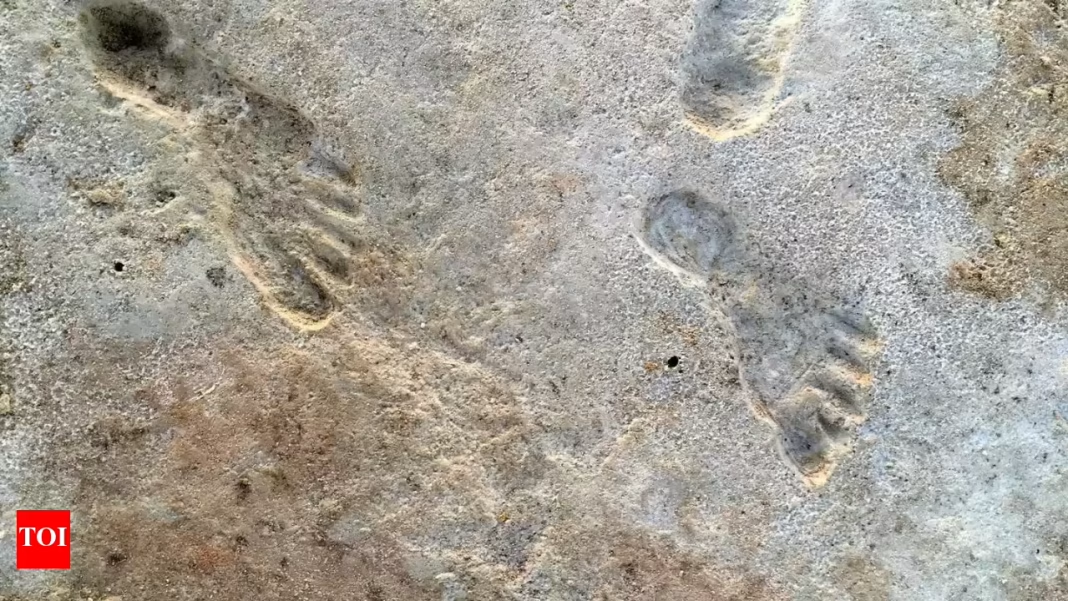A startling find in the American Southwest is challenging long-standing beliefs about early human presence in North America. Archaeologists have uncovered what appear to be ancient footprints that could significantly predate current estimates of when humans first arrived on the continent.
Imprinted in the soft gypsum of what was once a vast lakeshore, these tracks are estimated to be around 23,000 years old. Remarkably preserved, the impressions clearly show toes, arches, and heels. These footprints, located in White Sands National Park, New Mexico, sit alongside those of now-extinct Ice Age animals such as mammoths and giant sloths—offering a rare glimpse into a shared ancient habitat.
Clovis tools, previously considered the earliest proof of humans in North America, date back roughly 13,000 years. However, this new study—published in a leading scientific journal—suggests humans may have been here a full 10,000 years earlier. The revelation has prompted renewed exploration into how ancient people adapted to extreme cold, shifting coastlines, and unfamiliar wildlife as they moved through a frozen landscape.
The area once occupied by Lake Otero, a massive Ice Age body of water stretching over 1,600 square miles, is now a treasure trove of fossilized activity. Within dried sediments, researchers found 61 footprints made by both adults and children. These prints capture playful and practical moments—some show slipping, others evidence of backtracking. Radiocarbon analysis of tiny seeds from aquatic plants embedded within the footprints yielded dates between 21,000 and 23,000 years old.
“We knew it was going to be controversial,” admits co-author Kathleen Springer, a geologist with the United States Geological Survey (USGS). After their initial paper, she remembers thinking, “we knew we had to do more.”
To eliminate doubts tied to possible dating errors from aquatic plants, researchers extracted pollen from pine trees—a land-based marker immune to aquatic distortion—from the same sediment layers.
Their analysis placed the samples between 22,600 and 23,400 years ago, in strong agreement with the seed-based dating. Tests using a different technique, optically stimulated luminescence (OSL), confirmed that sediment just above the prints hadn’t seen daylight in over 21,500 years.
The ages derived from both methods “are statistically indistinguishable from our original seed ages,” states co-author Jeffrey Pigati, also a geologist with the USGS.
“The new dates harmonize perfectly with the previous chronology,” says Thomas Higham, a radiocarbon-dating expert at the University of Vienna who wasn’t part of the study. “This is crucial and compelling confirmation” of the older ages.
Helen Roberts, a geographer and OSL specialist at Aberystwyth University, said: “They obviously had a tricky set of material here. It’s very striking how those ages come together despite those challenges.”
Still, the discovery hasn’t been accepted by all. Geoscientist Joe Davis pointed out that forces like wind or flowing water could possibly move older sediments on top of newer ones, complicating the evidence. The research team, however, emphasized that their precise excavation work showed no indication of such disturbances. Independent labs backed up their conclusions, significantly lowering the chance of contamination.
“The site in New Mexico has rewritten history books as we’ve discovered wonderful examples of human activity, the way that humans interacted with one another, with the landscape, and with the animal life there,” said Sally Reynolds from Bournemouth University.
Her colleague at Bournemouth, Matthew Bennett, explains this affirmation of the timeline “underlines the accuracy of our original study and provides a fascinating update to the movements and lifestyles of our ancestors.”
He added: “This ancient world was fraught with dangers, including formidable predators like dire wolves and saber-toothed cats. We can see where she slipped in the mud at certain points … we can also see the child’s footprints where she set them down, presumably because she was tired and needed a rest.”
Discover more from LN247
Subscribe to get the latest posts sent to your email.


